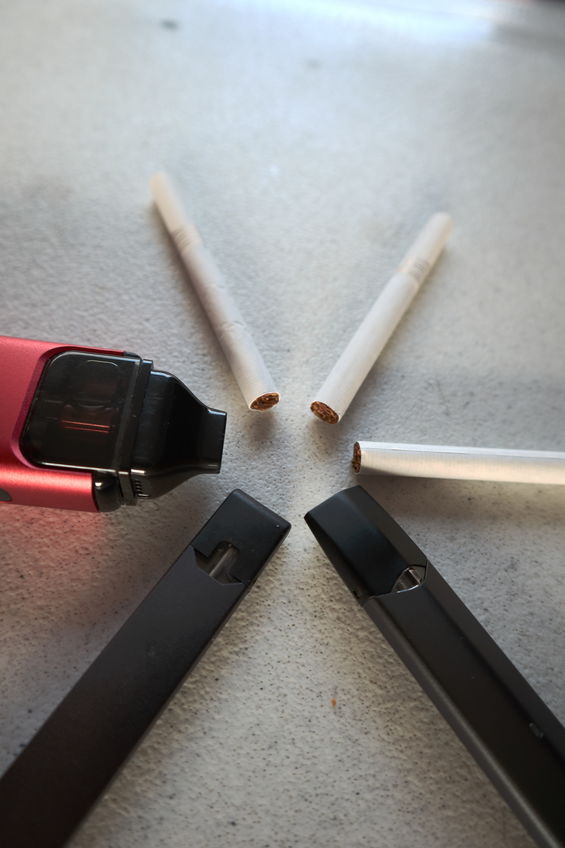
On Wednesday, June 23, 2021 the Subcommittee on Economic and Consumer Policy held its fourth hearing examining youth vaping in the US. Senator Dick Durbin and the acting FDA Commissioner, Janet Woodcock were witnesses. The FDA is in the process of determining whether e-cigarettes will be legally allowed to stay on the market. “All e-cigarette manufacturers were required to submit Premarket Tobacco Product Applications (PMTAs) to FDA by September 9, 2020, in order to legally stay on the market.” Stat News reported that Senator Durbin and other Democrats accused the FDA of inaction on the issue: “Who is the cop on the beat to whom we entrust our children? It’s the Food and Drug Administration.”
The hearing comes as the FDA begins deciding in earnest which e-cigarette manufacturers can stay on the market, as part of a congressionally mandated process. Manufacturers like Juul, Blu, and Njoy were required to submit marketing applications to the FDA in September but are allowed to stay on the market until at least September 2021, while the agency reviews those applications.
In 2018, the Surgeon General issued an advisory where he declared e-cigarette use among youth an epidemic. “We need to protect our young people from all tobacco products, including e-cigarettes.” Despite this advisory, there has been little concrete action as yet. The chair of the subcommittee said the youth vaping epidemic has continued over the past three years. “More than 20% of high schoolers vape, and 5% of middle schoolers vape.” These are the same levels that led the surgeon general to declare a youth vaping epidemic in 2018. To the FDA, he said:
No matter what your decision on Juul’s PMTA, you know that the problem does not end there. To end the youth vaping epidemic, you’ll have to deny the applications for all products with the same characteristics that made Juul so popular with a generation of children.
Federal officials had singled out Juul for fueling the epidemic because of its intentional advertising aimed at youth and the sleek design of its product, which made Juul far and away the most popular e-cigarette among young people. The company defended its products, saying it took steps to prevent youth from using them. Juul stopped distributing some flavorings to retail stores, but only after the FDA announced plans to restrict the sale of flavored e-cigarettes to young people. The Oversight Committee released internal documents from its investigation of Juul that showed the company knew its products were addictive for teens.
Included in the documents was an internal memo from a Juul-focus group in 2018 that asked the teens why the product was so attractive to kids in Middle School and High School. “Several of the young people responded that the product’s high nicotine content kept kids hooked.” Juul says it chose a high nicotine level for its pods, roughly equivalent to a pack of cigarettes, to entice adults to quit combustible cigarettes. The claim seems somewhat disingenuous, as the company began receiving complaints that its products nicotine levels were too high around one year after Juul launched in 2016.
In an October 2018 CDC press release, “Sales of JUUL e-cigarettes skyrocket, posing danger to youth,” the then director of the CDC Robert Redfield said, “The popularity of JUUL among kids threatens our progress in reducing youth e-cigarette use.” During 2016-2017, Juul Labs’ sales increased 641%, from 2.2 million devices sold in 2016 to 16.2 million devices sold in 2017. Truth Initiative, a nonprofit organization seeking to eliminate nicotine addiction, surveyed 12 to 17-year-olds in April of 2018 to assess how so many young people were getting their hands on Juul products. Seventy-four percent said they obtained Juul in a store. Fifty-two percent said they received Juul from a family member or friend. For more information on Juul, see: “JUUL Is Not a Gem,” “The Armageddon of Juul,” and “Juul’s Empty Harm Reduction Rhetoric.”
While vaping is less harmful than smoking, it still is not safe. As of February 18, 2020, the CDC reported there have been 68 deaths from EVALI—e-cigarette or vaping-associated lung injury. There were 2,807 hospitalized cases or deaths from EVALI. Laboratory data showed that vitamin E acetate, an additive in some THC-containing vaping products was strongly linked to the EVALI outbreak. The CDC recommended that people not use THC-containing e-cigarettes or vaping products. “E-cigarette, or vaping, products (nicotine- or THC-containing) should never be used by youths, young adults, or women who are pregnant.”
Michael Blaha, the director of clinical research at the John Hopkins Ciccarone Center for the Prevention of Heart Disease, shared health information about vaping in “5 Vaping Facts You Need to Know.” While vaping is less harmful than smoking, it still isn’t safe. There are many unknowns about vaping, including what chemicals are included in the vapor inhaled by users and how physical health is affected over the long term. Blaha said people need to understand e-cigarettes are potentially hazardous to their health. “Emerging data suggests links to chronic lung disease and asthma, and associations between dual use of e-cigarettes and smoking with cardiovascular disease. You’re exposing yourself to all kinds of chemicals that we don’t yet understand and that are probably not safe.”
Research suggests nicotine is just as addictive as heroin and cocaine. Many e-cigarette users get more nicotine than smokers because they can buy cartridges that have a higher concentration of nicotine. You can also increase the voltage of an e-cigarette to get a greater hit of the substance. E-cigarettes are not approved by the FDA as smoking cessation tool, even though they have been marketed as such. A study found that most people who intended to use e-cigarettes to stop smoking ended up continuing to smoke both.
According to Blaha, there are several reasons e-cigarettes are enticing to youth. Teens believe vaping is less harmful than smoking. They have a lower cost per-use than traditional cigarettes. They often have added flavorings and there is a lack of smoke from their use. “With no smell, e-cigarettes reduce the stigma of smoking.” Blaha said:
What I find most concerning about the rise of vaping is that people who would’ve never smoked otherwise, especially youth, are taking up the habit . . . It’s one thing if you convert from cigarette smoking to vaping. It’s quite another thing to start up nicotine use with vaping. And, it often leads to using traditional tobacco products down the road.
When Janet Woodcock testified before the House Subcommittee on Economic and Consumer Policy, she said protecting the youth of the US from the dangers of tobacco products was among the FDA’s most important responsibilities. “We are taking aggressive steps to make sure tobacco products are not being marketed or sold to kids.” After describing the FDA’s efforts to regulate ENDS (electronic nicotine delivery systems), and the agency’s actions to prevent youth access and use of these products, she said: “We still have much to accomplish and will continue to take strong action to protect youth and monitor the effectiveness of our actions.” Given the concerns noted here and in the linked articles, let’s hope that strong action will include the end of some ENDS products that have been clearly soliciting youthful consumers like Juul.
For more information on concerns with vaping and ENDS, see: “The Ticking Time Bomb of Vaping,” “Priming Young Adults with Vaping” and “Not the End of Smoking.”





